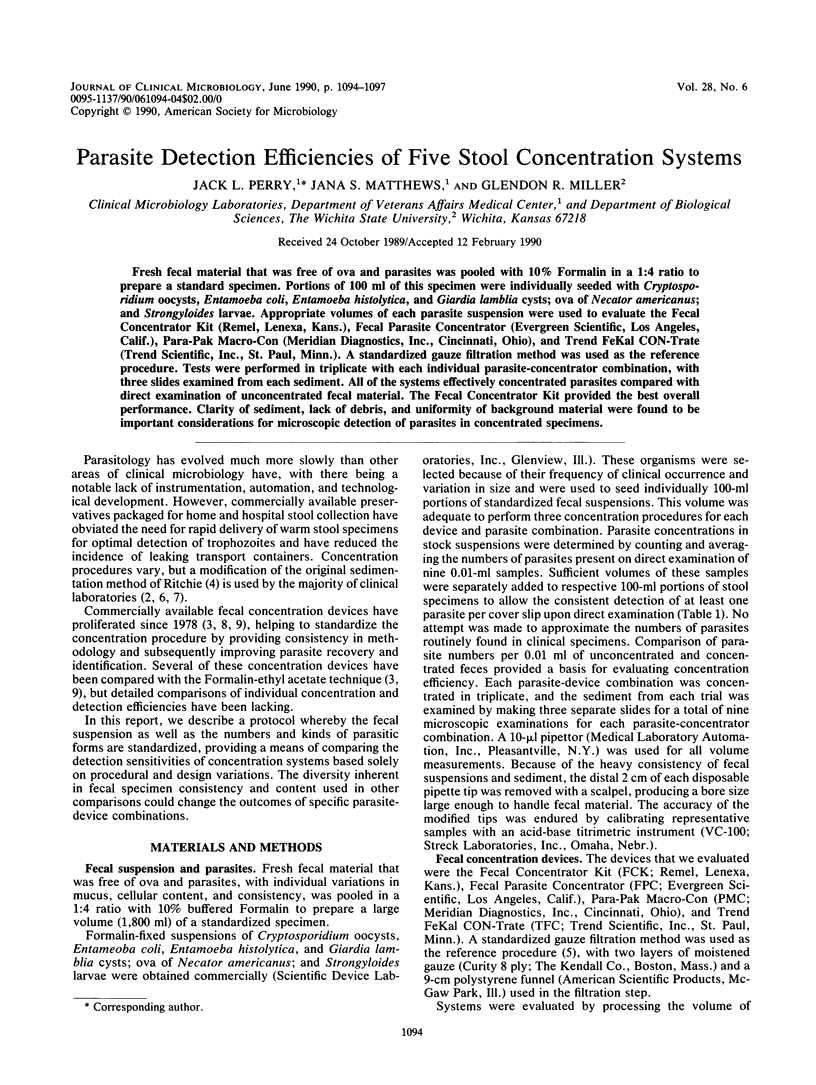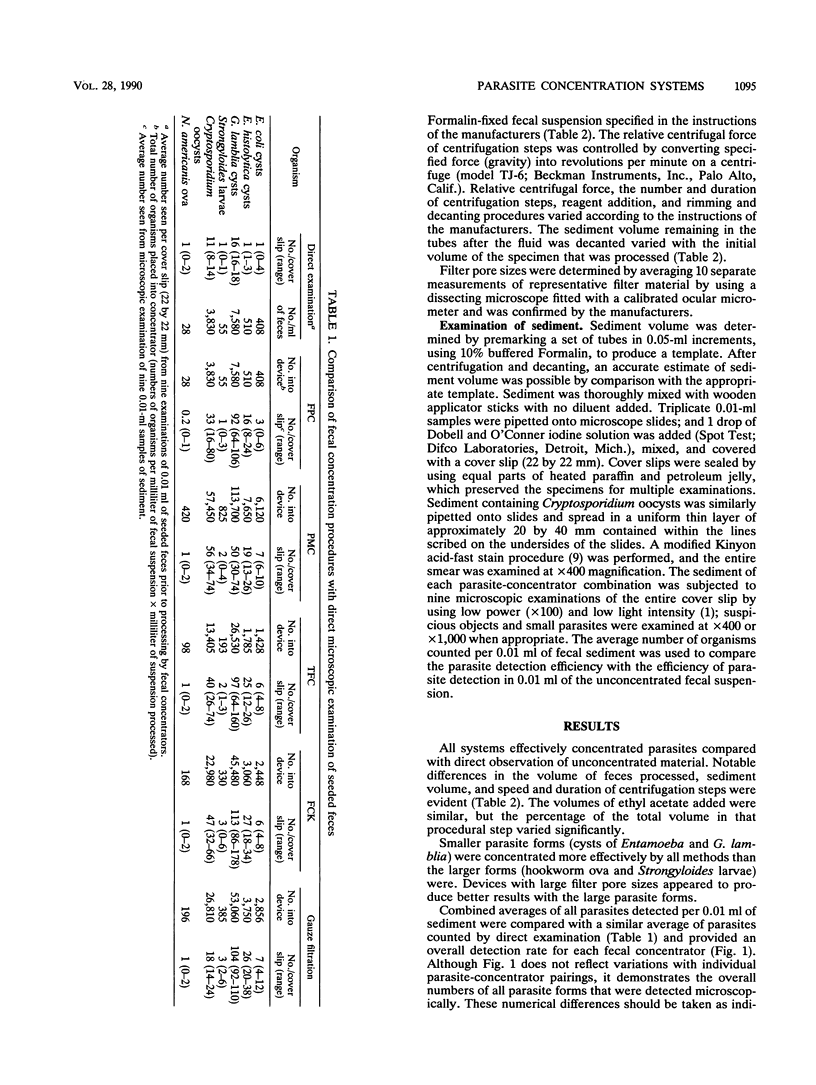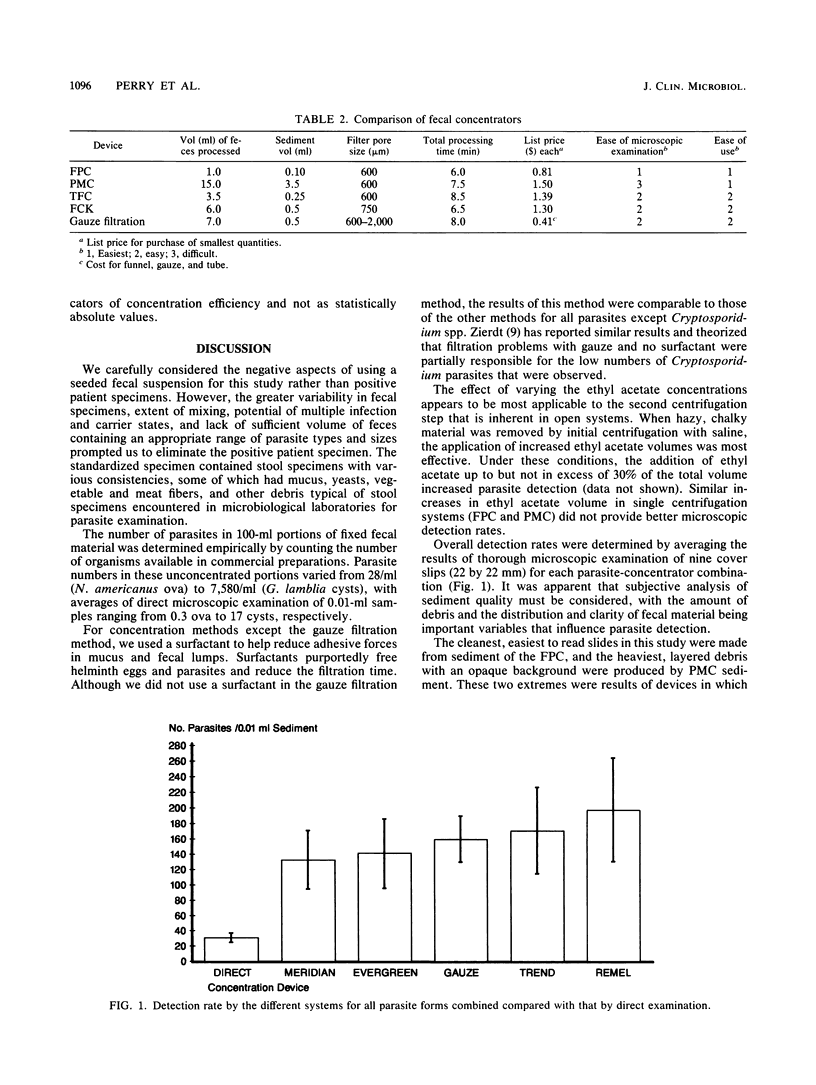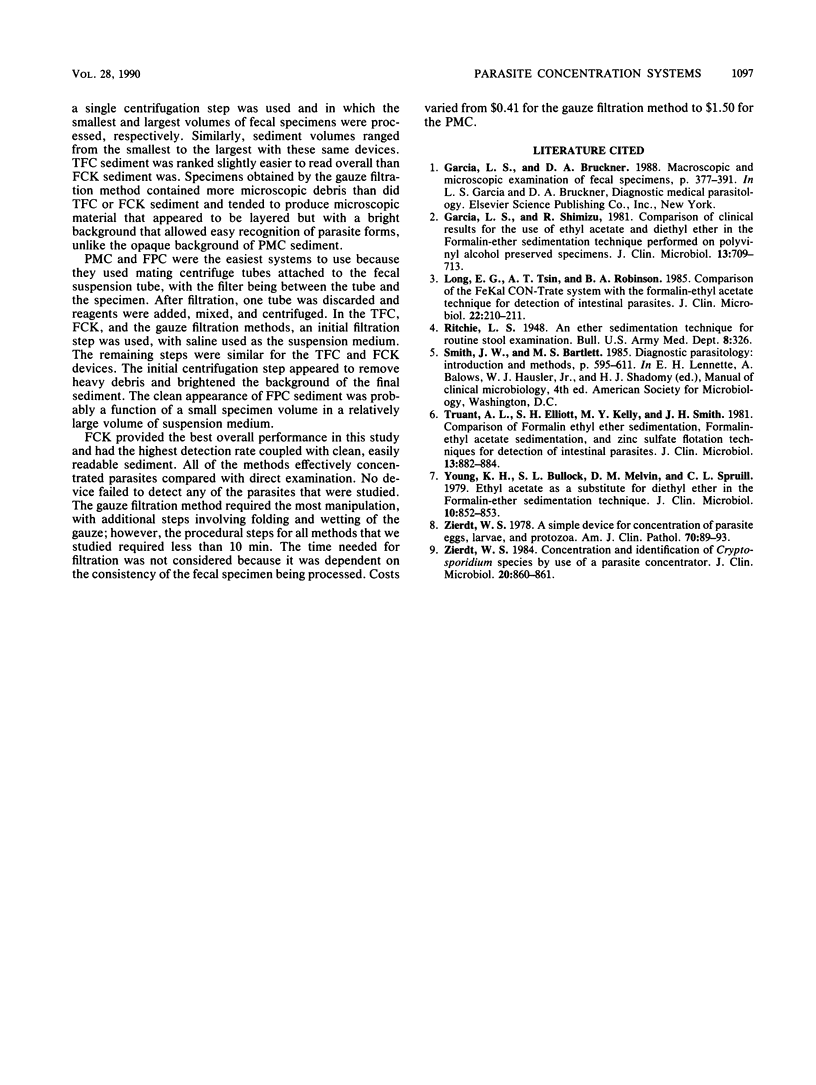Abstract
Fresh fecal material that was free of ova and parasites was pooled with 10% Formalin in a 1:4 ratio to prepare a standard specimen. Portions of 100 ml of this specimen were individually seeded with Cryptosporidium oocysts, Entamoeba coli, Entamoeba histolytica, and Giardia lamblia cysts; ova of Necator americanus; and Strongyloides larvae. Appropriate volumes of each parasite suspension were used to evaluate the Fecal Concentrator Kit (Remel, Lenexa, Kans.), Fecal Parasite Concentrator (Evergreen Scientific, Los Angeles, Calif.), Para-Pak Macro-Con (Meridian Diagnostics, Inc., Cincinnati, Ohio), and Trend FeKal CON-Trate (Trend Scientific, Inc., St. Paul, Minn.). A standardized gauze filtration method was used as the reference procedure. Tests were performed in triplicate with each individual parasite-concentrator combination, with three slides examined from each sediment. All of the systems effectively concentrated parasites compared with direct examination of unconcentrated fecal material. The Fecal Concentrator Kit provided the best overall performance. Clarity of sediment, lack of debris, and uniformity of background material were found to be important considerations for microscopic detection of parasites in concentrated specimens.
Full text
PDF



Selected References
These references are in PubMed. This may not be the complete list of references from this article.
- Garcia L. S., Shimizu R. Comparison of clinical results for the use of ethyl acetate and diethyl ether in the formalin-ether sedimentation technique performed on polyvinyl alcohol-preserved specimens. J Clin Microbiol. 1981 Apr;13(4):709–713. doi: 10.1128/jcm.13.4.709-713.1981. [DOI] [PMC free article] [PubMed] [Google Scholar]
- Long E. G., Tsin A. T., Robinson B. A. Comparison of the FeKal CON-Trate system with the formalin-ethyl acetate technique for detection of intestinal parasites. J Clin Microbiol. 1985 Aug;22(2):210–211. doi: 10.1128/jcm.22.2.210-211.1985. [DOI] [PMC free article] [PubMed] [Google Scholar]
- Truant A. L., Elliott S. H., Kelly M. T., Smith J. H. Comparison of formalin-ethyl ether sedimentation, formalin-ethyl acetate sedimentation, and zinc sulfate flotation techniques for detection of intestinal parasites. J Clin Microbiol. 1981 May;13(5):882–884. doi: 10.1128/jcm.13.5.882-884.1981. [DOI] [PMC free article] [PubMed] [Google Scholar]
- Young K. H., Bullock S. L., Melvin D. M., Spruill C. L. Ethyl acetate as a substitute for diethyl ether in the formalin-ether sedimentation technique. J Clin Microbiol. 1979 Dec;10(6):852–853. doi: 10.1128/jcm.10.6.852-853.1979. [DOI] [PMC free article] [PubMed] [Google Scholar]
- Zierdt W. S. A simple device for concentration of parasite eggs, larvae, and protozoa. Am J Clin Pathol. 1978 Jul;70(1):89–93. doi: 10.1093/ajcp/70.1.89. [DOI] [PubMed] [Google Scholar]
- Zierdt W. S. Concentration and identification of Cryptosporidium sp. by use of a parasite concentrator. J Clin Microbiol. 1984 Nov;20(5):860–861. doi: 10.1128/jcm.20.5.860-861.1984. [DOI] [PMC free article] [PubMed] [Google Scholar]


